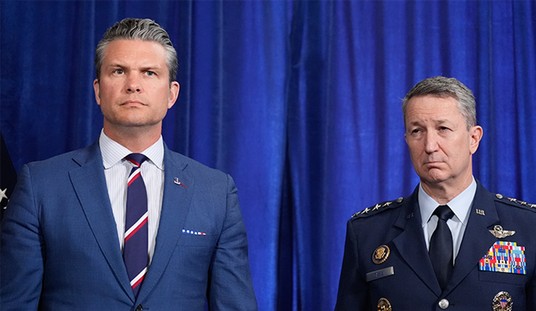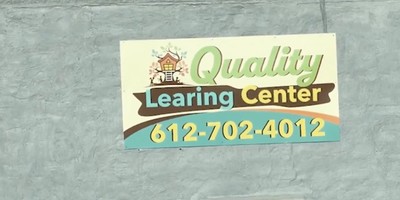As a columnist for the South Florida Sun Sentinel, the newspaper of record for Broward County, Michael Mayo is a fairly astute fellow. But that hasn’t made him immune to credit card issuers pulling the rug from under him. This past April he posted the following tale of personal woe:
“I got a letter from Bank of America the other day. The fine folks at Bank of America wanted to let me know that they were raising my credit card interest rates.Currently, the card has an 8.9 percent fixed annual rate on purchases. I have a credit line of $13,700 and a balance of $1,004. I’ve never been late with a payment.
The fine folks at Bank of America, who’ve spent the last few years buying up failed institutions like Countrywide and Merrill Lynch and taking some $163 billion in taxpayer bailout pledges, let me know that as of May, my interest would change to a variable rate of 14.65 percent annually.
From a fixed 8.9 percent to a variable 14.65 percent – such a deal!”
Complaints like these are cropping up around the nation with a depressing frequency.

Tens of millions of Americans with checking, savings and credit card accounts are learning first-hand the meaning of what MSNBC.com columnist Bob Sullivan calls “gotcha capitalism.” It’s a modern variation on the Chinese “death by a thousand cuts.” Banks and other financial institutions in recent years have raised existing fees to dramatic heights, imposed a broad range of new fees, doubled and even tripled interest rates on credit cards without prior warning and otherwise put the squeeze on unsuspecting customers.
The spate of major bank failures and federal bailouts over the past year hasn’t stemmed these predatory practices. Legislation might, and even then only up to a point. This May, Congress amended the Truth in Lending Act in ways that would curb abusive practices by credit issuers. Yet Georgetown University law professor Adam Levitin and many other industry observers believe that once the law fully takes effect next summer, credit providers will find ways to circumvent the law.
Capitalism’s superiority over socialism by now ought to be an accepted fact. An economy only can function under a system of contractual exchange between buyer and seller, a relationship that socialism at best grudgingly concedes or denies altogether. Yet for precisely this reason, capitalism can be sustained only through a high degree of public trust. When trust breaks down, offending firms and industries must rebuild their reputation to remain competitive. The banking industry, to make a long story short, has a credibility problem right now.
Recommended
Nothing makes institutional borrowers more irate, and untrusting, than the experience of being nicked with sudden, exorbitant penalties and interest rate increases. A search of almost any financial website these days will turn up comments by responsible borrowers, for the most part with no political axe to grind, bitter over their treatment by creditors. One response to Mayo’s article stated:
"My Juniper card went from 16.99 percent to 27 percent with the option of canceling if I reject the terms. My Capital One [card] went from 13 percent to 18 percent with the exact same option to reject. I have been late maybe twice in the past 10 years. However, the increase has not mentioned this in the explanation. Congress needs to do something. People are struggling too and bankruptcies are imminent for both the consumers and financial institutions."
Here’s another unhappy camper:
"I have several credit cards and have never been late or missed a payment to any of them. Due to economic times, I do carry a balance though. My Chase card decided to raise my rate from 9.99 percent to 29.99 percent and won’t provide me with a reason! They did, however, raise my credit limit by $3,000.00, which I promptly declined. Every month I call and have finally gotten it down to 15.99 percent now that it is almost paid off."
These complaints are legitimate and impossible to ignore. For decades, lenders, in a coordinated fashion, have aggressively raised existing service fees, while imposing new ones on services long considered gratuities. The collapse and subsequent federal rescue of major banks did not halt this process. Banking industry consultant R.K. Hammer estimates that credit card issuers as a whole in 2009 will rake in $20.5 billion in penalty fees, up from a record-high $19 billion in 2008. And Moebs Services, a Chicago-area economic forecasting firm, projects that bank and credit union overdraft revenues this year will reach $38.5 billion. “Fee income is basically where banks and credit unions can offset both loan- and investment-related losses,” notes CEO Michael Moebs.
Banks and other credit providers justify such measures as a response to market conditions. On one level, they’ve got a point. According to the Fitch Credit Card Index, accounts delinquent by at least 60 days constituted a record-high 10.4 percent of the dollar value of outstanding loans for June. More than $70 billion of credit card debt may wind up uncollectible by the end of the year. “I think when you look at the whole – all the fees overall – the landscape has changed and that has meant rising costs for our industry,” notes Bank of America Senior Vice President for Communications Anne Pace. “For the bank to continue offering competitive products and services, and making sure we are lending responsibly in the current environment, we have to adjust our prices.” A spokesperson for Capital One Bank likewise recently noted: “We’ve had to rethink risk. It’s a challenging environment.”
But a “challenging environment” is nothing new. The Great Depression was nothing if not challenging, yet banks back then didn’t treat their customers as cash cows to be milked dry. Here’s one indicator of something gone wrong: The number of complaints about credit card practices to the Better Business Bureau rose to 8,988 in 2008, a rise of 17 percent over the previous year. Younger readers might not fathom this, but as recently as 30 years ago – the onset of a serious recession – many U.S. banks charged only $2 for a bounced check. And credit card issuers imposed very small late-payment and over-the-limit fees, if any at all. The practice of slapping insufficient-funds, over-the-limit, and late-payment fees of $30 or more appears to defy logic. The main idea behind the banking industry’s massive automation push during the Eighties, after all, was to reduce the cost of individual transactions and to pass along the savings to customers.
What happened, unfortunately, was that banks, savings & loans, credit unions and finance companies, spurred by government deregulation on one hand and mandates to lend to “underserved” populations on the other, took on increasingly risky investments. Their actions included short-sighted mergers and acquisitions, massive loans for speculative real estate projects and, more apropos, issuance of credit cards to people with a poor or nonexistent credit history. Solvent or not, lenders came to see penalty fees as a lucrative way of realizing untapped sources of revenue to cover losses. Last year’s mortgage failures, which triggered a worldwide capital constriction not seen in 75 years, did not dull the appetite for this revenue, especially as the federal government bailed them out anyway.
Overdraft fees on checking accounts are a scandal unto themselves. Bank of America, the recipient of $45 billion in stock purchases under the U.S. Treasury Department’s Temporary Asset Relief Program (TARP), this year raised the number of overdraft fees a customer can be charged in a day from five to 10. Bank of America also assessed a one-time fee of $35 on any checking account whose balance lies below zero for more than five days, and raised the monthly fee on My Access checking accounts from $5.95 to $8.95. Citibank, which also has received $45 billion in TARP disbursements, in 2008 hiked its overdraft fee from $30 to $34 and its non-customer ATM use fee from $2 to $3. And Wells Fargo, recipient of $25 billion in TARP largesse, raised its maximum overdraft fee from $34 to $35.
But it’s arguably credit cards where account holders, regardless of risk level, get slammed the hardest. Practices that might cause pangs of guilt even among Mafia-connected loan sharks are now common among legitimate lenders. They include:
Extreme and retroactive interest rate hikes. For any reason, banks may jack up interest rates – and many have. A recent analysis by Credit Suisse concluded that during January-April 2009, holders of co-branded cards who didn’t pay off their entire balance at the end of the month saw their rates rise on average by 24 percent – or nearly 3 percentage points. If anything, that figure likely has increased, given recent admissions by banks that they seek to raise revenues by any means necessary to offset last year’s credit market collapse. And remember, these rate hikes typically are retroactive to the entire balance. Try to imagine buying a cart of groceries only to have the supermarket notify you a month later that you owe additional money because of your reclassification as a “high-risk shopper.” Well, that’s how many bank card issuers now do business.
Double-billing cycle finance charges. Here banks charge interest based on the customer’s average outstanding debt over the last two months. That way, even borrowers rapidly paying down their balance can serve as a profit source. Example: A borrower has a balance of $5,000 on a credit card carrying an APR of 12.99 percent whose issuer calculates interest through the average daily balance method and establishes a billing cycle of 25 days (i.e., without a late fee). Under a conventional single-month billing cycle, the finance charge would be $5,000 x 12.99 x 25/365 = $44.49. If the borrower pays off the entire balance, the next month’s finance charge would be zero. But under a double-billing cycle, that same borrower would be charged an additional $22.25 for the second month, based on the average of $5,000 and zero; i.e., $2,500. The grand total in the first case would be $44.49; in the second case it would be $66.74. No good deed goes unpunished.
Application of payments solely to the lower tier of a two-tiered balance. This is a way to wring revenues from borrowers who, usually out of desperation, take out cash advances or make balance transfers to their checking accounts. Since cash carries substantially higher interest rates than purchases, there’s real money to be made here. Let’s say you owe $5,000 on your bank Visa or Master Card, of which $2,000 consists of cash and the other $3,000 of purchases. Thus, 40 percent of the balance would be subject to the higher cash rate. Now assume you make a $1,000 payment, and without making new purchases. Excluding accrued interest, all of that $1,000 would be applied to the purchase portion. That way, cash in the next billing statement would account for 50 percent of the outstanding balance (i.e., $2,000/$4,000). Over time, the portion of the balance subject to the higher cash rate conceivably could reach 100 percent – and often does.
Dramatic reductions in credit ceilings. Banks increasingly have used this tactic over the past year. Assume a situation in which you owe $3,000 on a particular card with a $12,000 credit ceiling. Your credit utilization ratio in this case would be 25 percent – not bad. But if without warning the bank lowers the ceiling to $6,000, the ratio would become 50 percent. And because your credit score will drop accordingly, the bank can raise your interest rate with a clear conscience. Hey, it’s a challenging environment.
Credit issuers have other methods of squeezing out revenues, too. There is a now-familiar villain, the universal default rate, in which a single late payment triggers an interest rate hike not only by that creditor but by other creditors as well – ah, the joys of information-sharing! And there is a newer practice, a surcharge on low-activity, high-balance accounts. This January, for example, Chase Bank began charging $10 a month on 400,000 accounts showing large balances and few recent transactions; i.e., accounts in the name of people doing their best to get out of trouble.
Credit card issuers defend such practices as adjustments to heightened risk. Yet there is a certain self-fulfilling prophecy. For by pummeling borrowers who are late, maxed out or both, lenders are heightening the risk of default at least as much as responding to it. A pileup of hidden fees merely drives borrowers deeper into a hole from which bankruptcy is an increasingly attractive escape, especially for those losing their jobs. We are gradually creating a permanent debtor class out of a financially strapped middle class. Even without considering the impact of that legalized loan-sharking racket known as “payday lending,” the ranks of the desperate may rise dramatically. And for consumers, winning in court is a long shot bet. According to the National Arbitration Forum, companies prevail in 94 percent of all cases involving a credit card or cell phone bill.
This May, at the urging of President Obama, Congress passed the Credit Card Accountability Responsibility and Disclosure Act (Credit CARD). It’s probably the only sensible legislation thus far backed by the current administration. These amendments to the Truth in Lending Act “establish fair and transparent practices relating to the extension of credit under an open end consumer credit plan and for other purposes.” Among other things, the new Credit CARD law places restrictions on the marketing and issuing of credit cards to college students; shields new recipients of credit cards from interest rate hikes during the first 12 months; requires credit card issuers to provide 45 days notice before imposing any interest rate increase; and bars lenders from slapping retroactive interest rate hikes on an account until that account is at least 60 days past due.
Ideally, government action shouldn’t be necessary to stem the current tide of consumer red ink. Negotiated agreement between borrower and creditor, whether in person, in writing or over the phone, remains the best way of adjudicating disputes, so long as the terms are clear and consistent. The problem is that lenders aren’t necessarily clear or consistent. What they’re doing may be legal, but that doesn’t make it right. That’s why Congress has taken a keen interest in the issue.
Far be it for me to deny the hazards of government intervention. Proposed legislation by House Financial Services Committee Chairman Barney Frank, D-Mass., on behalf of the Obama White House to establish a Consumer Financial Protection Agency (H.R. 3126) is a good example of where not to go. The plan would create a super-agency out of existing ones, to be possessed of enhanced powers of regulation, data collection, supervision and enforcement ostensibly to protect consumers from predatory practices by financial institutions. In practice, this agency, at best of dubious necessity, would severely restrict commerce. The best way to avoid such legislative overkill would be for banks and other financial institutions to rediscover the word “integrity.” Clearly spelling out the terms of an agreement and sticking to them would seem to be the best way of keeping customers. The alternative is having customers turn angrier – and more numerous.
























Join the conversation as a VIP Member